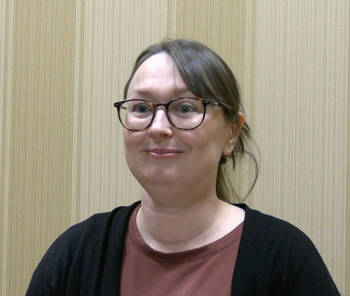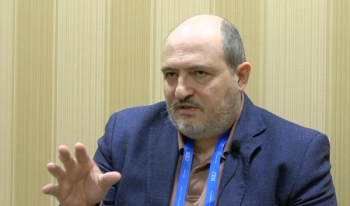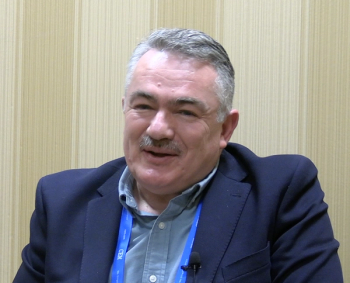
Using Surface-Enhanced Raman Spectroscopy to Probe Artificial Dye Degradation on Hair Buried in Multiple Soils for Up to Eight Weeks
Researchers at Texas A&M University (College Station, Texas) presented a novel approach to forensic hair analysis that is based on high-throughput, nondestructive, and non-invasive surface-enhanced Raman spectroscopy (SERS) and machine learning (ML). Using this approach, Dmitry Kurouski and his team investigated the reliability of the detection and identification of artificial dyes on hair buried in three distinct soil types for up to eight weeks.
The discovery of concealed burials poses unique challenges for forensic specialists tasked with identifying the remains. These challenges require varied expertise to analyze discovered bones, teeth, and hair in various states. While several studies have focused on virgin hair degradation influenced by soil pH and decomposition fluids, the analysis of the interaction between artificial dyes on hair and soil remains under-researched. Researchers at Texas A&M University (College Station, Texas) presented a novel approach to forensic hair analysis that is based on high-throughput, nondestructive, and non-invasive surface-enhanced Raman spectroscopy (SERS) and machine learning (ML). Using this approach, Dmitry Kurouski and his team investigated the reliability of the detection and identification of artificial dyes on hair buried in three distinct soil types for up to eight weeks. Kurouski discussed this research with Spectroscopy Magazine, along with the paper that resulted from the research.
What inspired this research and the subsequent paper (1)?
In nearly all cases involving the identification of a perpetrator or victim, hair can be found at the scene and analyzed. Our group previously demonstrated that surface-enhanced Raman spectroscopy (SERS) can identify specific hair dye down to its brand and permanence (2). We want to determine how long SERS can effectively recover such information in typical environments where hair might be found, such as soil, thereby testing the limits of this technology.
Is hair an easier or more difficult identifier than other possible remains that might be encountered, such as flesh or bone?
Flesh, for instance, disintegrates faster because it’s made of a lot of different cells that are eaten by the uncontrolled bacteria and enzymes during decomposition. Other remnants from the body such as hair, which is primarily just protein, can remain for centuries.
How much of an impediment can the soil which the remains are found in be to analysts?
Just one gram of soil can contain billions of microorganisms, each with some unique biomechanisms that can affect the dye chemical on the hair. Additionally, some of these microbes can break down the hair protein itself over time, fading the natural coloration. Beyond that, different soils retain different amounts of water as well as different acidities, which also affect the stability of the dye on hair.
You state in your paper’s introduction that current forensic hair analysis is primarily based on light microscopy. What difficulties, shortcomings or obstacles do those who use this technique encounter? Does this include the use of dyes or fluorescence evaluation?
Looking at a recently published optical microscopy key for forensic hair analysts, we know that when it comes to identifying whether the hair was dyed and how long requires the presence of the bulb, which is unfortunately often absent after long periods due to its rapid degradation over time. Additionally, literature has shown that the field, which relies on high expertise and visual observations, can have conflicting conclusions for one sample by several different experts (4).
Why was surface-enhanced Raman spectroscopy (SERS) your technique of choice in your analysis? What benefits does it offer that you believe to be superior to light microscopy?
Surface-enhanced Raman spectroscopy (SERS) was chosen for the analysis of dyes on hair due to its exceptional sensitivity, specificity, and non-destructive nature. SERS enhances Raman signals by up to ten-billion times its normal signal, allowing detection of low-concentration dye molecules and providing detailed molecular fingerprints unique to each dye. This technique requires minimal sample preparation, is surface-specific, and enables rapid, real-time analysis. While light microscopy offers morphological insights, it lacks the molecular detail and sensitivity of SERS, making SERS superior for accurate and comprehensive dye identification on hair.
In your study, you employed SERS coupled with partial least squares discriminant analysis (PLS-DA) to assess the efficacy of detecting artificial dyes on hair buried in three distinct soil types for up to eight weeks. Was there any reason that you chose that specific amount of time?
We analyzed each sample shortly after collection and so we gained a sense of when the signal was weakening. After eight weeks, the signal became noisier than any previous week, but it was still detectable. While we could have continued, we decided eight weeks was sufficient to assess linearity in signal intensity patterns, specifically how signal decreases over time for each colorant.
Briefly state your findings in this study.
We found that we could not find a straightforward way of assessing exposure effects on the signals from dyed hairs, meaning that some signals for the same dyed hair were stronger after longer exposures. However, we did find we were able to identify most of the dyes throughout all eight weeks in all three soil environments.
Do your findings correlate with what you had hypothesized?
Previously, our other environmental exposure works such as sunlight (5) and water submergence (6) had shown correlation between time exposed and signal intensity, so we were somewhat surprised to not see that here.
Was there anything particularly unexpected that stands out from your perspective?
I was surprised that two of our dyes, specifically two permanent ones, had lost their signal as early as one week after exposure. This indicates that some colorants are far more prone to degradation than others.
Were there any limitations or challenges you encountered in your work?
At crime scenes, hair can encounter the influence of many environmental factors such as sunlight, water submergence, and heat. Furthermore, substances of biological and non-biological origin could be present on hair. In our future studies, we want to model the influence of several factors on dyed hair and determine the extent to which combination of such factors can alter the accuracy of SERS-based identification of hair colorants.
What best practices can you recommend in this type of analysis for both instrument parameters and data analysis?
If external validation is to be done for this work, it should pay most attention to the synthesis of nanoparticles and the preparation steps for the spectra before analysis. Size and composition of nanoparticles significantly affect the enhancement factor and resonances for specimens they are used to enhance. Additionally, there are a plethora of different pre-processing steps such as multiple normalization techniques that can alter the accuracy of models.
Going back to a previous question, how do you think your findings would have been affected if you buried the hair for a longer period, or if the weather were unusually hot or wet?
Great question; with the knowledge that water affects the presence of dye on hair overtime from our other research (6), it is likely that a much wetter conditioning of our hair in the soil would have increased the degradation process.
Can you please summarize the feedback that you have received from others regarding this work?
This work was funded by the National Institute of Justice (NIJ). NIJ invited the PI to report these and other findings from our research group at American Academy of Forensic Sciences (AAFS) that was held earlier this year in Denver, Colorado. We received highly positive feedback from numerous forensic experts, research fellows, and professors about this work. This feedback encouraged us to continue advancing forensic analysis of hair that is critically important to all forensic experts in the US.
What are the next steps in this research and are you planning to be involved in improving this technology?
There are several other environments and substances that hair interacts with in forensics and so we are constantly testing new ones to discover when our technique will be unhelpful. In terms of working on improving this technique, much of our research has only utilized one form of machine learning model, but in the future we hope to incorporate others such as artificial (ANN) networks and eXtreme gradient boosting trees (XGBoost) analyses as we continue to learn about them.
References
1. Holman, A. P.; Peterson, M.; Linhart, E.; Kurouski, D. Using Surface-Enhanced Raman Spectroscopy to Probe Artificial Dye Degradation on Hair Buried in Multiple Soils for up to Eight Weeks. Sci. Rep. 2024, 14, 6469. DOI: 10.1038/s41598-024-57147-2
2. Higgins, S.; Kurouski, D. Surface-Enhanced Raman Spectroscopy Enables Highly Accurate Identification of Different Brands, Types, and Colors of Hair Dyes. Talanta 2022, 251, 123762. DOI:
3. Bisbing, R. E. The Forensic Identification and Association of Human Hair.In Forensic Science Handbook, Volume I, Taylor & Francis, 2020; pp 151-200,
4. Muro, C. K.; Doty, K. C.; Bueno, J.; Halamkova, L.; Lednev, I. K. Vibrational Spectroscopy: Recent Developments to Revolutionize Forensic Science. Anal Chem. 2015, 37 (1), 306-327. DOI:
5. Holman, A.; Kurouski, D. The Effects of Sun Exposure on Colorant Identification of Permanently and Semi-Permanently Dyed Hair. Sci. Rep. 2023, 13, 2168. DOI:
6. Holman, A. P.; Kurouski, D. Surface-Enhanced Raman Spectroscopy Enables Confirmatory Detection of Dyes on Hair Submerged in Hypolimnion Water for up to Twelve Weeks. J. Forensic Sci. 2023, 68 (6), 2163-2168. DOI:
Newsletter
Get essential updates on the latest spectroscopy technologies, regulatory standards, and best practices—subscribe today to Spectroscopy.




